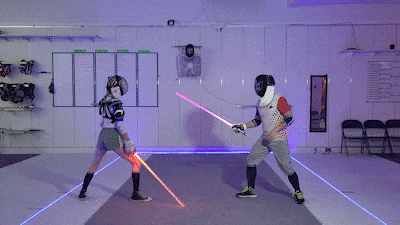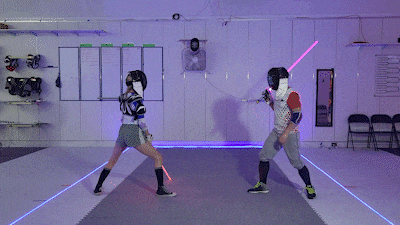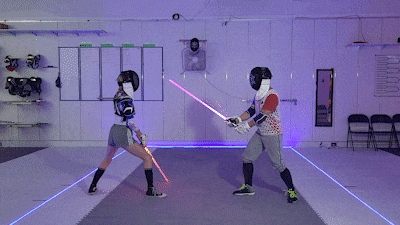Officiating force is at least partially subjective. Therefore your goals are to emphasize consistency and corrigibility, rather than accuracy.
SUBJECTIVE-OBJECTIVE JUDGMENT SYSTEM
You are going to use a hybrid Subjective-Objective judgment system for force. Subjectivity gives you the flexibility to pursue the most just outcomes, while objectivity grounds you within a recognized body of knowledge, and gives you tools to explain your decisions, make consistent decisions, and correct fencer behavior. It also helps “cover your ass” in the event that a fencer complains.
In order to make an excessive force citation, a fencer’s attack(s) must trigger at least one subjective flag and at least one objective flag.
Objective flags include:
One or more Force Signs
Long Sweeps
Two-handed attacks
Bloodshed
Injury (athlete experiences diminished capacity to fence)
Subjective flags can include but are not limited to:
Indications of pain or complaint by the fencer being struck
Loud swooshing through the air
Habitually risky behavior
Welts
Suspicion of intent to whip the weapon at the opponent, especially by overpowering a block.
Any general sense or instinct you have that makes you feel there is danger, the fencing is unsafe, or one or more fencers are behaving recklessly.
You can and must cite fencers even when they miss. In fact, it’s often easier to detect excessive force on a miss than a hit. Dealing with injuries is much easier when they don’t happen in the first place.
ENFORCEMENT PROTOCOL
This protocol assumes you are acting as the tournament director, floor supervisor, or box proctor. You can perform this protocol as a regular referee as well.
Call a halt to the match immediately.
Announce your citation.
Identify or explain the objective flag triggered.
Announce the warning or penalty.
Ask the violating fencer if they understand why they were cited. If not, explain the objective flag and how they triggered it.
If desired, give suggestions to help the fencer avoid further citations.
If the match would resume, then alert the head ref that the match may resume.
GUIDELINES
LOW RISK
Any correctly executed action as demonstrated in Sections One & Two should be permissible.
Any correctly executed percussive attack, long or short, should be permissible.
MODERATE RISK
FAWSGWEG
HIGH RISK
Any instance of injury or bloodshed should most likely be penalized with card or disqualificaiton.
Attack strikes multiple targets on opponent
Attack bounces or strikes multiple times
Attack bends severely into opponent
Attack glances off or presses into target
Attack skips, bounces, wobbles, or vibrates on the opponent






